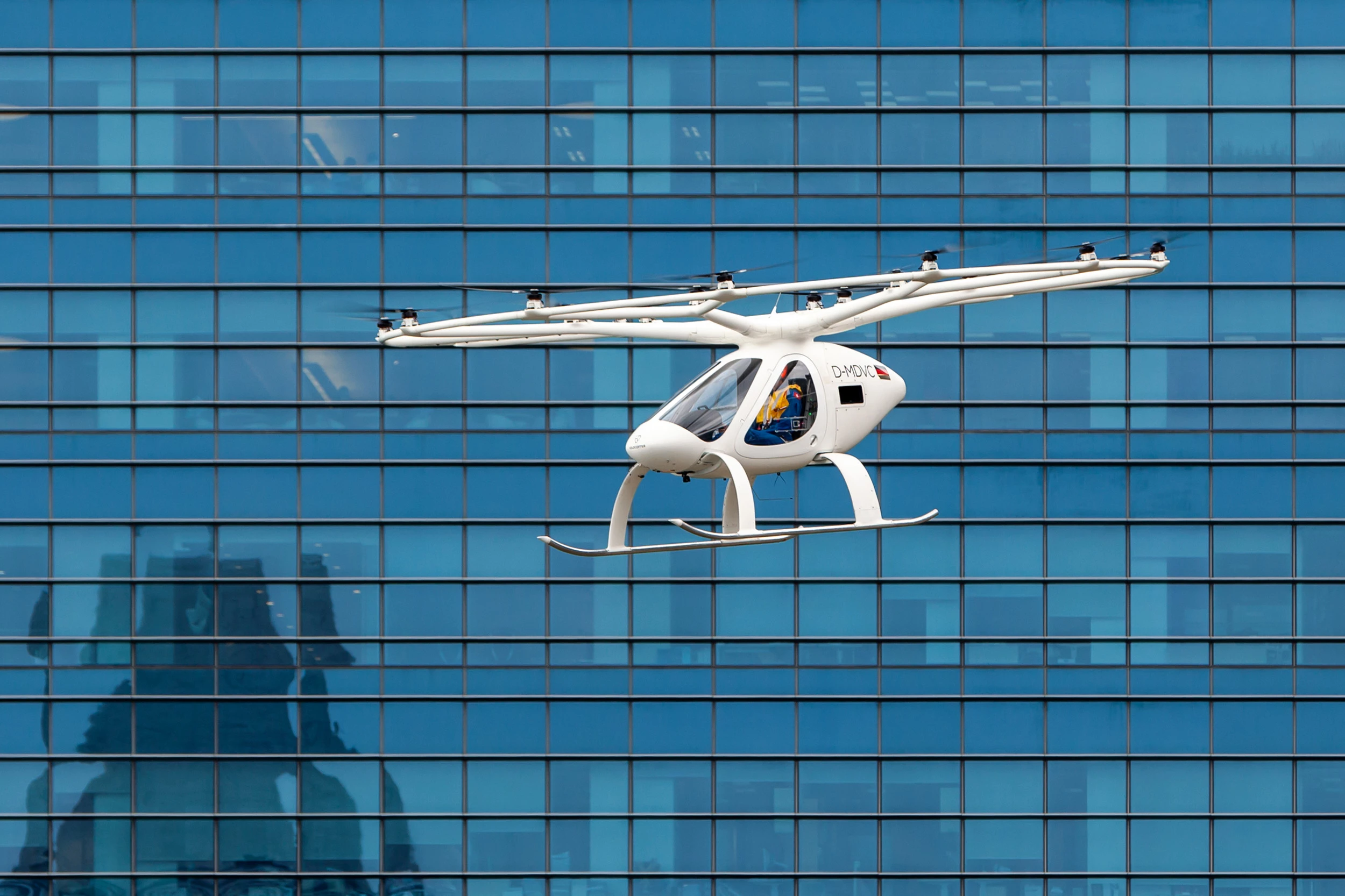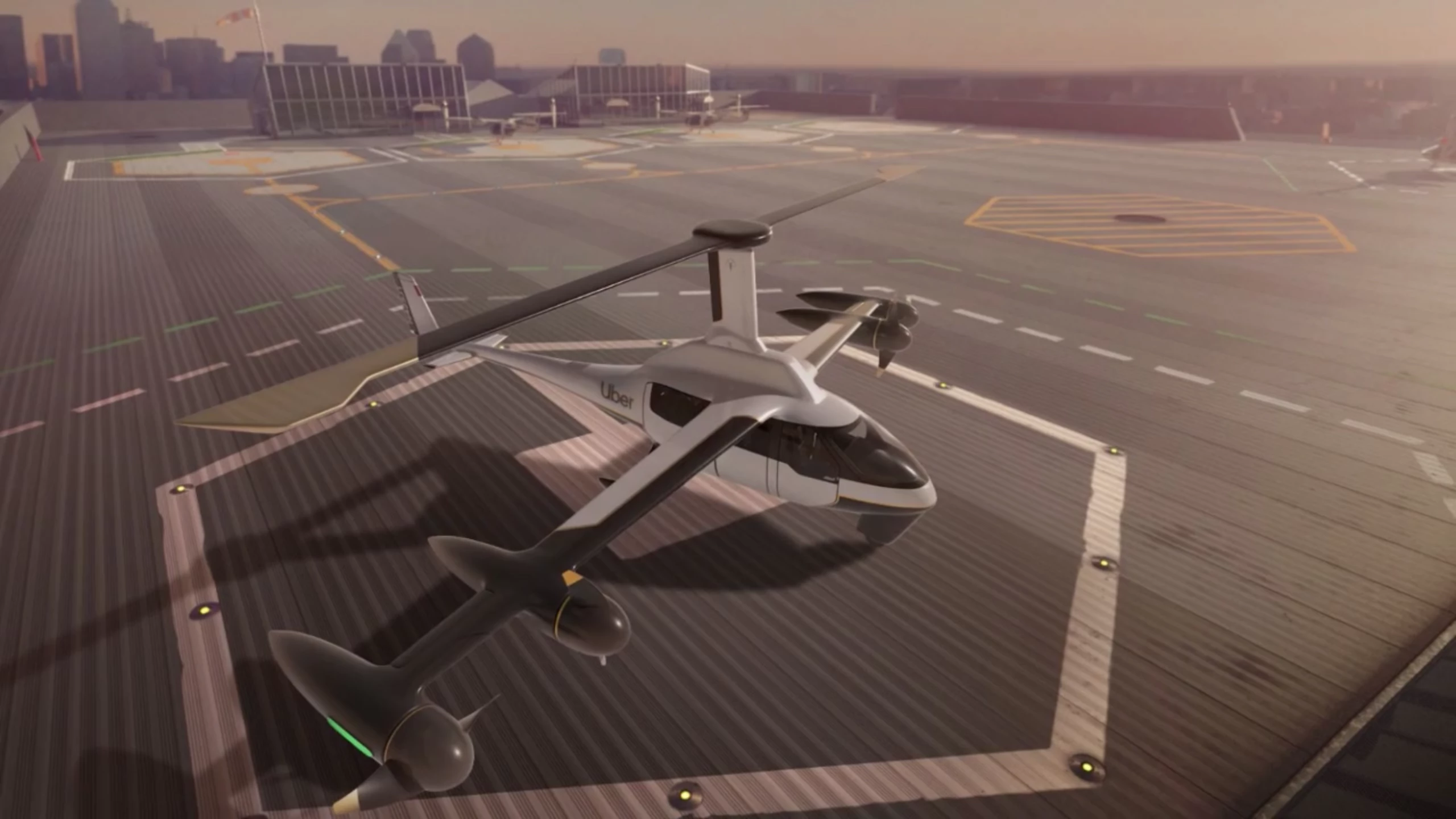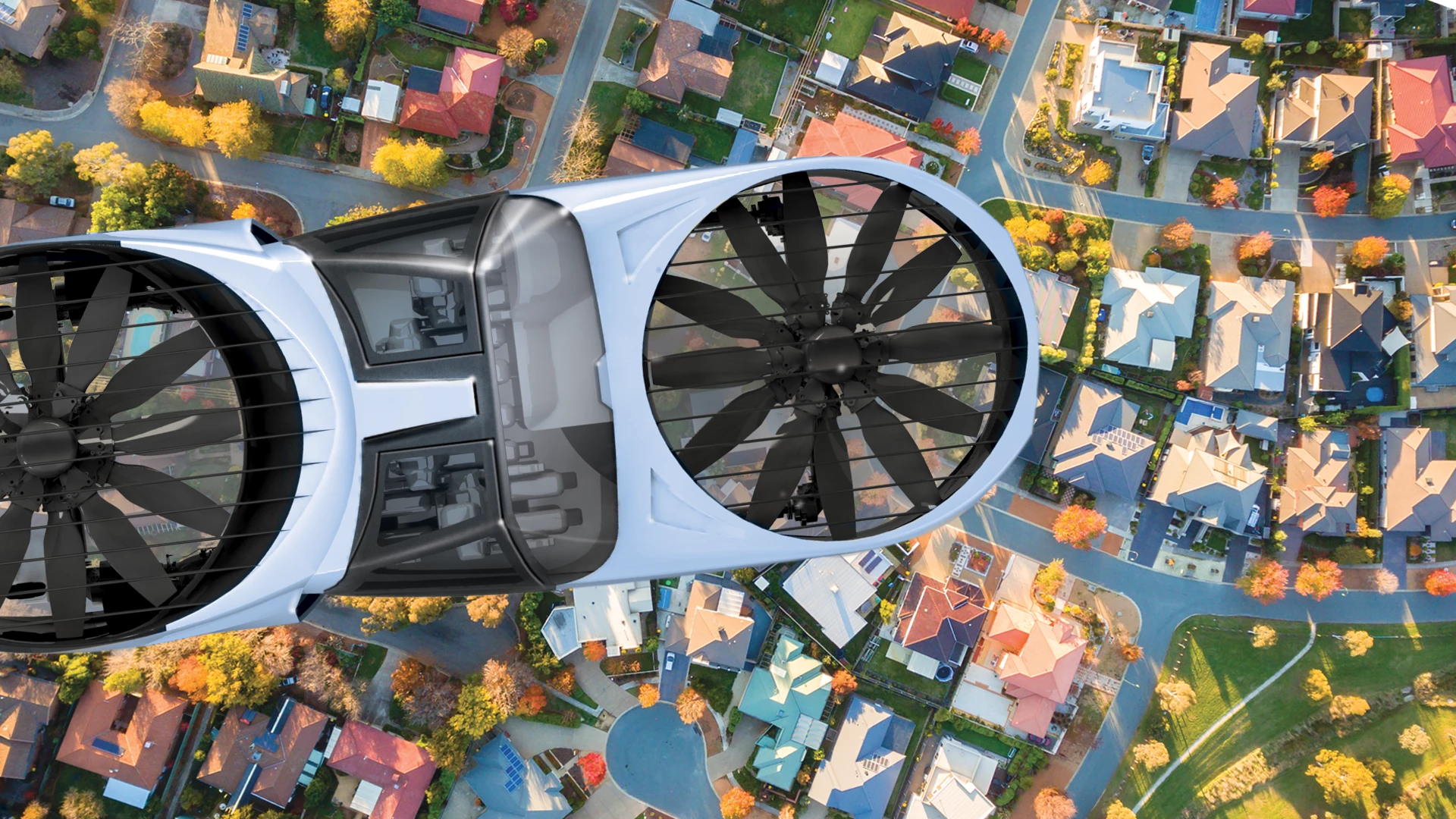Electric VTOL air taxis are one of the great emerging technologies of our time, promising to unlock the skies as traffic-free, high-speed, 3D commuting routes. Much quieter and cheaper than helicopter travel, they'll also run on zero-local-emission electric power, and many models suggest they'll cost around the same per mile as a ride share.
Eventually, the market seems to agree, they'll be pilotless automatons, even cheaper and more reliable than the earliest piloted versions. Should the onboard autopilot computers get confused, remote operators will take over and save the day as if they're flying a Mavic drone, and every pilot gone will be an extra passenger seat in the sky.
Large numbers of eVTOL air taxis will change the way cities and lifestyles are designed. Skyports atop office buildings, train stations and last-mile transport depots will encourage multi-mode commuting. Real estate in scenic coastal areas might boom as people swap 45 minutes crawling along in suburban traffic for 45 minutes of 120 mph (200 km/h) air travel, and decide to live further from the office.
Several companies have told us they believe they can deliver an air taxi service for about the same price as it would cost to take an Uber. Mind you, this assumes medium to long distance trips, and it's not exactly cheap to take a 40-mile (64 km) Uber ride.

The technology doesn't feel far away. Electric multirotors deliver excellent hover stability thanks to the enormous, near-instant torque production of electric motors, which can respond very quickly to stabilize an aircraft as wind conditions move it around. And there are a plethora of different takes on how these machines should be built.
Some designs are as simple as big multirotors with passenger cabins. Others attempt to extend range by adding complexity in the form of tilting rotors and multi-mode flight; hovering like a multirotor, they transition to wing-assisted forward flight, which is much more efficient but dynamically more complicated.
What's stopping us from having eVTOL air taxis today, then?
These machines still have a few major challenges left to overcome.
The first is the same problem that's holding back high-performance electric motorcycles: current lithium battery technology simply doesn't allow you to carry enough energy yet. Until energy density is at least doubled, most of these designs don't offer range endurance long enough to make them commercially viable. These big battery packs will need charging, too, which would ground the aircraft for a significant time.
The second is certification. At this stage, we're not aware of any eVTOL design that's certified as a fully commercially operable aircraft, and while some endeavors are finding ways to push forward around the edges of the law, the fact remains that these are entirely new categories of aircraft, and the process of certifying, testing and regulating them is going to be monstrously expensive and time consuming.
The third impacts the second: safety. Electric VTOL aircraft can offer all sorts of redundancy options that no other aircraft can match. Take out a prop, or a motor, or even a few of them, and most of these designs can still fly thanks to distributed propulsion and smart software. Ballistic parachutes can be fired to bring them down gently in the case of total catastrophic failure. In the vast majority of cases, these things should be very, very safe.

But here's the issue; ballistic parachutes can only save you above a certain altitude, maybe 120 feet or so. Below that, they don't have time to open up, which means that every time you take off or land in one of these machines, you're exposed to a window of time in which total system failure would drop you like a stone.
We've been calling the area between 30 and 120 feet off the ground the "death zone," and I'm sure eVTOL manufacturers wish we'd stop talking about it. We have heard, off the record, about some pretty wild solutions to this problem, but as of yet nobody has come forward to say they've solved it.
Down the track, there will also have to be a considerable leap forward in air traffic control if the skies are going to safely hold large numbers of these machines zipping about between a bunch of skyports dotted around an urban area.
All these problems are being worked on, and we thought now was a good time to do a quick round-up of the major players that are working on airframes and leading this emerging field. Here are the major contenders as we see it.
Joby Aviation
Transitioning eVTOL with six tilting rotors, five seats, 200 mph top speed, 150 mile range
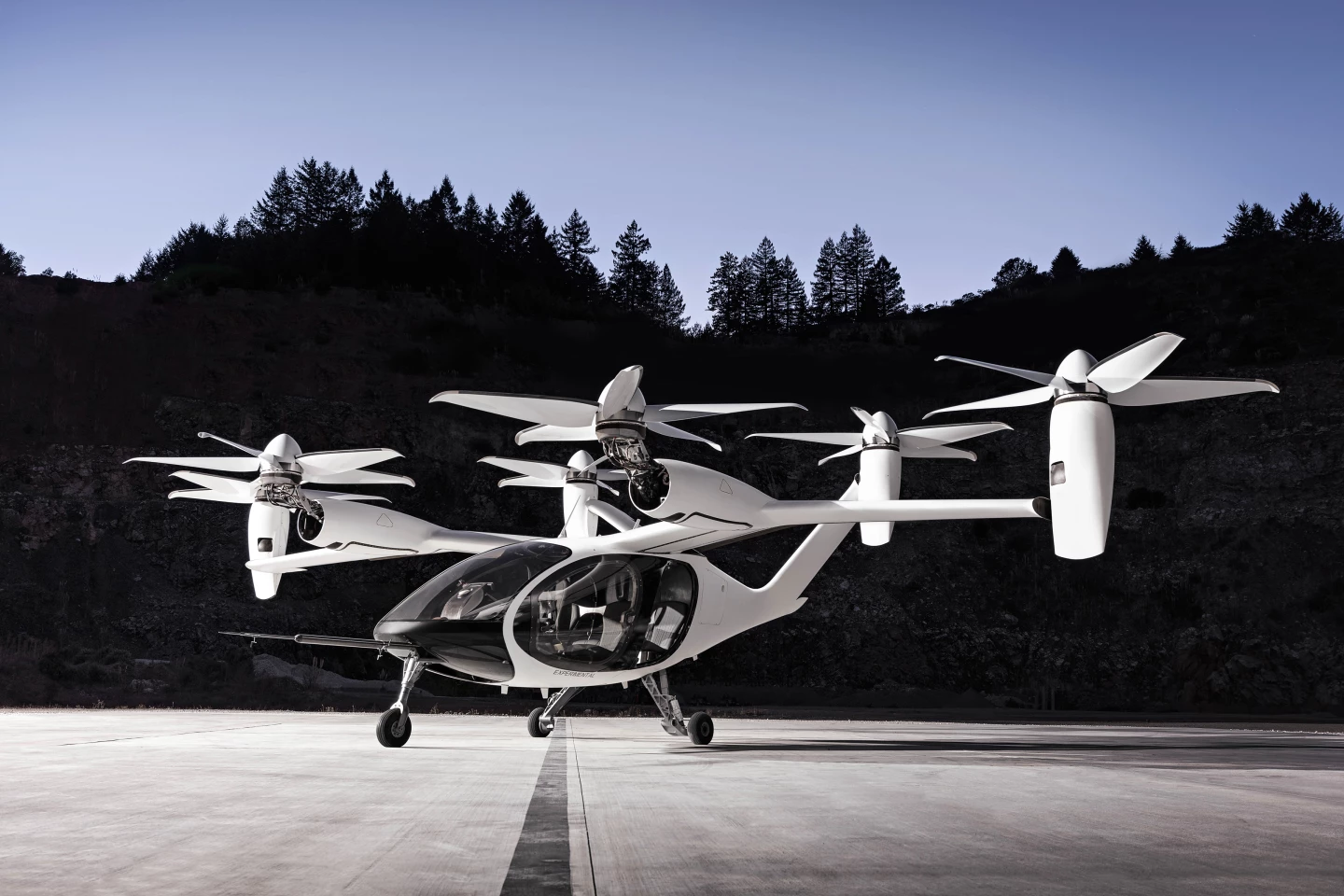
Remember the Joby Gorillapod? Well, the fellow that invented it, JoeBen Bevirt, has long left the bendy tripod business. For more then 10 years, he and a crack team of mad aviation scientists have been sequestered away on a sprawling, slightly hippie compound outside Santa Cruz, working on spectacular eVTOL designs. The company now has several facilities spread out across Northern California.
Joby Aviation has recently completed a monster US$590 million fundraising round, much of that coming from Toyota, bringing the total it's raised to US$720 million. While it's operated in stealth mode for most of its existence, the company has built and flown full-size, five-seat prototypes of its gorgeous aircraft with its six tilting rotors and V-shaped double tail. Joby says it flies at up to 200 mph (322 km/h) in near-total silence (once it's flying forward, anyway) and offers over 150 miles (240 km) of range per charge on current-gen batteries.
Joby says it commenced the airframe certification process in 2018, and expects it to be complete sometime before 2024. With Toyota contributing mass manufacturing assistance as well as heaping piles of cash, Joby is well positioned to be a leading force. We quietly wonder whether Toyota's expertise with hydrogen fuel cells may offer an advantage as this all plays out – a high-speed tilt-rotor fuel cell eVTOL with enormous range and near-instant refueling could look a lot more attractive than long out-of-service hours on a battery charger when commercial flights begin.
The company has signed a multi-year commercial partnership with Uber, and is also looking at setting up its own on-demand air taxi service in multiple markets.
Lilium
Transitioning eVTOL with 36 ducted fans on tilting banks, five seats, 186 mph top speed, 186-mile range

Lilium, based outside Munich in Germany, is another major player with more than US$340 million behind it and a workforce of 350 people that's preparing to scale up past 1,000. Lilium's aircraft is without doubt one of the most beautiful in the sector, a supercar-style cabin between slim, hammerhead wings with banks of very compact "electric jets" and no ungainly exposed propellers. It's a superbly futuristic design.
It's also flying, with public test videos available online of early-stage hover and maneuvering tests, and high speed testing soon to follow. The jet offers a top speed around 186 mph (300 km/h) and an impressive range of 186 miles (300 km) using existing battery technology. The huge number of small fans give it excellent redundancy in case of motor failure.
Lilium told us a few months ago it sees "a pretty clear path towards certification," and the company is targeting 2025 for the launch of its own service. At this stage it doesn't appear to be interested in selling aircraft to other operators.
Alakai Skai
Non-transitioning eVTOL with six rotors, five seats, 118 mph top speed, 400 mile range

Skai's recent emergence has thrown a cat amongst the pigeons, because its decision to ditch lithium batteries for a liquid hydrogen powertrain completely eliminates the battery technology bottleneck that almost every other company is hoping will resolve itself by the time they launch commercial services.
A 400-liter liquid hydrogen tank will give this machine a range around 400 miles, and Skai will fill it up in minutes from hydrogen tanks at its key depots while the lithium aircraft sit and charge, out of service for hours at a time. Because range is so comprehensively not an issue, Skai isn't bothering with wings or transitioning capabilities to make its aircraft more efficient. Instead, it's just a simple big hexacopter with a five-seat cabin, and the company says this great reduction in complexity should help get it across the line quicker with regulating bodies.
Based in New England on the East Coast of the USA, Skai is supported at this stage by a single private investor. The company told us midway through last year that it's expecting to be certified in 2020 and hopes to leapfrog its competitors into service, both through its own app and selling to other operators, before anyone else is ready. And while most companies are planning skyport-to-skyport shuttle operations, Skai wants to be able to land in your back yard for pickups and dropoffs if space allows.
Volocopter
Non-transitioning eVTOL with 18 rotors, two seats, 68 mph top speed, 22 mile range

Not far outside Stuttgart, Germany, Volocopter was pretty early on the scene with a simple 2-seat VC200 multicopter flying way back in 2013, when the company was still called E-volo. Earlier still, if you remember the first time you saw some madman flying a big multirotor with a yoga ball on the bottom, that was these guys back in 2011. Genuine Wright Brothers level aviation pioneer craziness.
Now, with a little over US$130 million in investment, the company has completed demonstration flights over Dubai, Stuttgart and Singapore, the latter with a pilot on board. The VoloCity air taxi is attractive, but somewhat humble in its ambitions. Its 18 rotors sit on six branching arms coming off the top of the two-seat cabin. Effectively a big ol' manned multirotor, its 68 mph top speed and 22-mile range make it more or less an exclusively intra-urban aircraft for short trips in crowded cities.
The company is also working on its own brand of urban skyport, as well as a cargo drone version of the aircraft capable of carrying a 200 kg (440-lb) payload.
eHang
Non-transitioning multicopter with 16 coaxial rotors, two seats, 81 mph top speed, 23-minute range
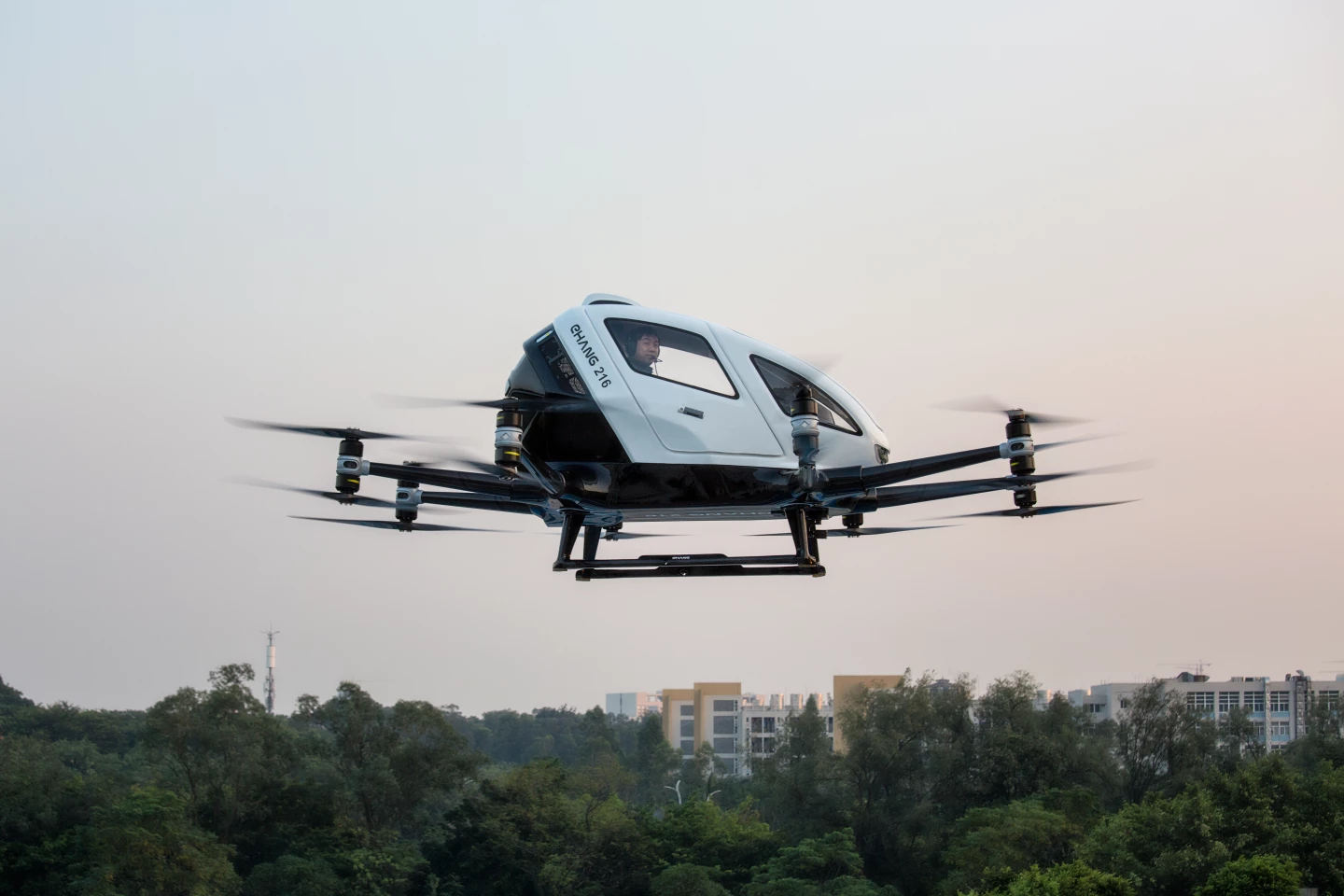
Headquartered in Guizhou, Southern China, eHang started out as a regular ol' camera drone company, but burst onto the eVTOL scene at CES 2016 with a fully built prototype single-seat manned multicopter. Best we can tell, the company has raised a little over US$92 million after listing on the NASDAQ stock exchange.
eHang has staged numerous test and demonstration flights in several countries, including many manned flights. Its 216 airframe uses 16 rotors, mounted coaxially on 8 arms, and has demonstrated its ability to fly with multiple props switched off. This is conceived as a pilotless air taxi service, in which passengers will simply enter the skyport destination they're headed for on a touchscreen, and the aircraft will fly there autonomously, with banks of remote operators standing ready to take over control in case of any issues.
Like the Volocopter, it's a short-range, two-seat design. But eHang wishes to automate things like crazy at its "vertiport" centers, with multi-level automated aircraft storage, automatic charging and fold-up arms for high-density parking.
Jaunt Air Mobility
Gyrodyne with one large main rotor and four forward rotors, five seats, 175 mph top speed, unknown range

No eVTOL design has raised more controversy in the comments section than Jaunt's ROSA – but the fact is, it's based on a much older, tested and established design than any of the multirotor newcomers. It looks like a helicopter, but it isn't. It's a slow-rotor gyrodyne; Jaunt bought up the rights to the CarterCopter business, which has over a thousand takeoffs and landings, and more than 100 hours of flight testing under its belt.
Jaunt is building a battery-electric version that will deliver quiet, fast five-seat air taxis, and this machine has two killer advantages over the rest of the field. Firstly, as a gyrodyne, there's nothing particularly new or complicated about the certification process. No new category has to be created, it can simply be certified and flown under existing FAA Part 29 rotorcraft regulations.
Secondly, that big top rotor, which looks a bit dorky compared to other eVTOLs, offers the ability to autorotate down to a controlled landing from any height in case of total system failure. This makes it, in our opinion, the safest of all the eVTOL designs we've seen, and it has other tricks up its sleeve, notably in the form of a gimballed cockpit that could make this a comfier ride than most.
Jaunt is "self-funded, and sufficiently funded to get to the next level" according to its founders. The company hopes to be certified by 2023 and flying commercial services by 2025. Certainly a company to keep an eye on, even if a lot of people don't want this to be what a future 3D air taxi looks like.
Wisk Aero
Transitioning multicopter with 12 VTOL rotors and a pusher prop, two seats, 100 mph top speed, 25 mile range
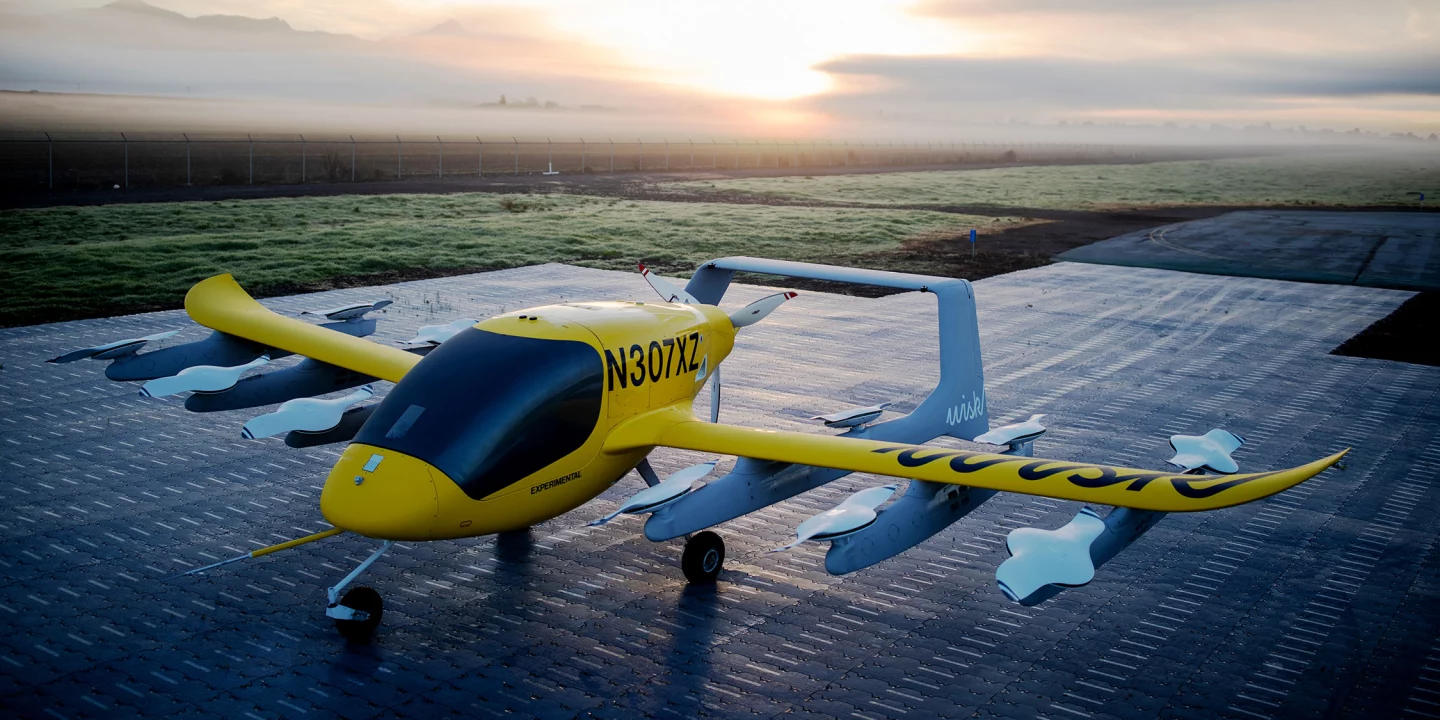
Famously backed by Google co-founder Larry Page, Kitty Hawk has spun off its self-piloting, 2-seat air taxi into a separate business called Wisk Aero, co-owned by Boeing. The Cora airframe looks a lot like a plane with extra bits in the form of twelve jauntily tilted VTOL props designed to give low drag when the aircraft shifts to forward thrust using its large rear pusher prop. Testing has already been plentiful and successful.
Notably, Wisk is planning to make Cora autonomous from day one, and day one could be fairly soon. That's because Wisk has pounced on a loophole in the New Zealand flight codes, where the Civil Aviation Authority's Part 115 Adventure Aviation regulations offer a pathway through which the Cora may begin flying commercially with far less red tape to clear than anywhere else.
With aviation giant Boeing and the 13th-deepest single pocket in the world (Larry Page's) to dip into, this company's resources could be as deep as the ocean, but judging by the length of its recruiting list, things are proceeding at a considerably more cautious pace than, say, Lilium or Joby.
Airbus
Non-transitioning coaxial 8-rotor multicopter, 4 seats, 75 mph top speed, 15-minute range

Airbus has built two key eVTOL candidates – the single-seat transitioning 8-rotor Vahana, and the big ol' 4-seat coaxial 8-rotor CityAirbus. Both, however, have simply been technology validation platforms; the Vahana program was discontinued at the end of 2019, and the CityAirbus here will probably outlive its usefulness within a year or two as well, having already flown hundreds of test flights.
Thus, its fairly uninspiring spec sheet, with just 15 minutes of flight range out of a 110 kWh battery and a cruising speed of 120 km/h, isn't likely to be indicative of what Airbus is really up to behind the scenes, or of what the company might bring to the table when it inevitably gets involved in the air taxi game at a commercial level. We'd imagine that Airbus will pop up with a larger, transitioning eVTOL at some point in the next couple of years.
Vertical Aerospace
4 stacking rotor, 4 tilting rotor transitioning eVTOL with 5 seats, 150mph cruise speed, 100 miles range

After successful flight testing of its simple "Seraph" multicopter airframe, Britain's Vertical Aerospace has announced plans for a transitioning air taxi, due to begin testing in 2021 and to enter service in 2024 if all goes according to plan.
The VA-1X transitioning air taxi will use fly-by-wire pilot controls and a Honeywell flight control system to manage the complexities of transitioning between VTOL and winged flight modes. Its rear bank of wing-mounted rotors is fixed in the vertical lift position, but during forward flight they stack into longitudinally-oriented pairs to reduce drag. The undercarriage, too, retracts into the aircraft's fuselage and leaves smooth surfaces for low drag and efficient flight.
Vertical Aerospace was founded by businessman Stephen Fitzpatrick, who founded Britain's Ovo Energy power supply company and won Entrepreneur of the Year at the country's National Business Awards in 2014. The VA team includes some pretty serious cats fresh out of Rolls-Royce, Formula One, Airbus and Jaguar's electric car division, to name a few.
Urban Aeronautics
Coaxial 4-rotor "Fancraft" with 6 seats, 168 mph top speed, 93-mile range
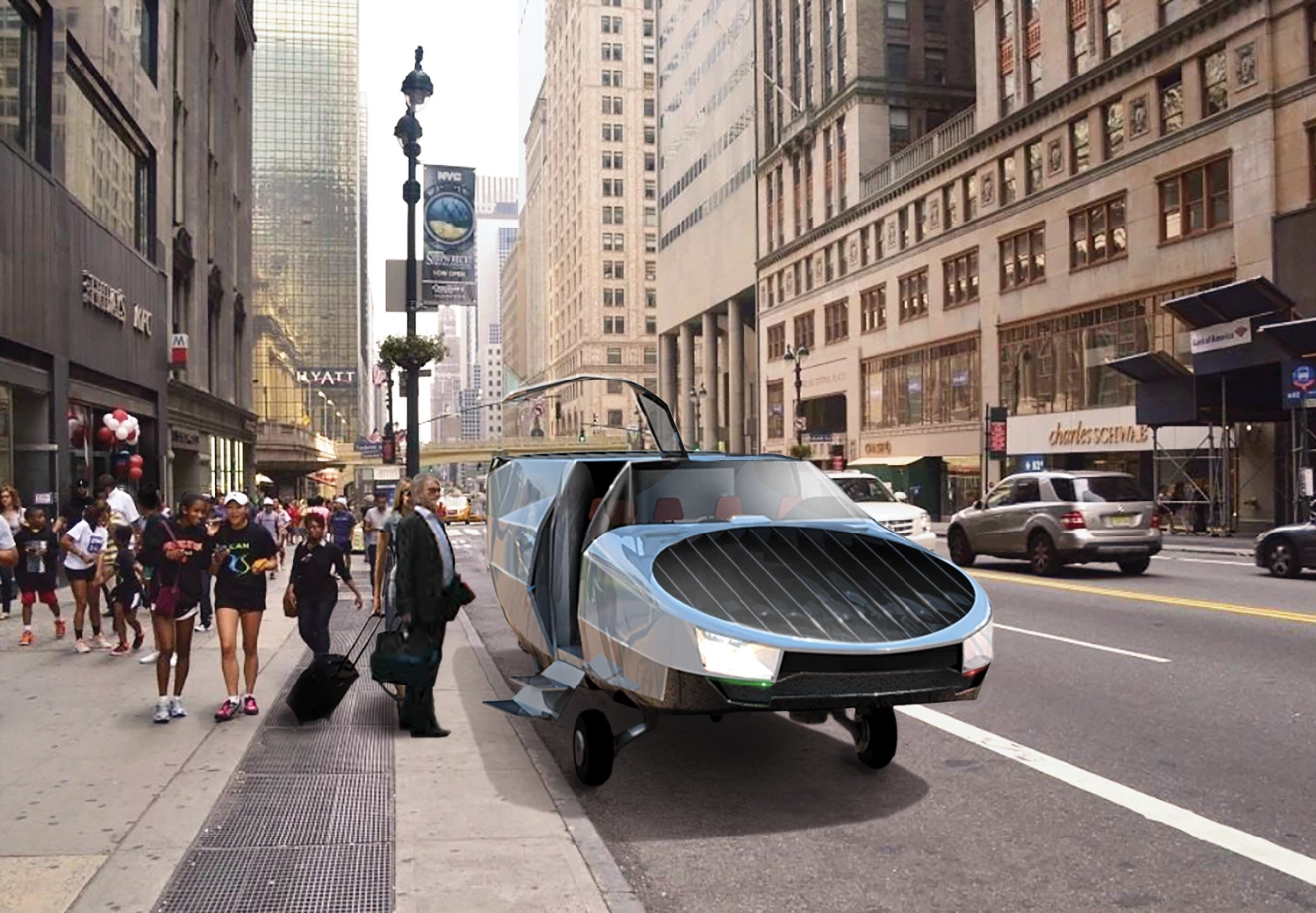
Israel's CityHawk should probably not be on this list, because it's not electric, but this bizarre design will eventually be converted to use a hydrogen fuel cell system, and it's certainly an interesting aircraft. It's based on the Cormorant airframe from Tactical Robotics, formerly known as the AirMule, which has done plenty of testing to validate its weird take on things.
The current, turbofan-powered CityHawk design uses two big, fully shielded and allegedly slow-rotating fans at the front and rear of a roughly car-shaped body to handle lift. Forward thrust is provided, on the Cormorant at least, by an additional pair of horizontal ducted fans at the rear. We're at a bit of a loss to understand how it balances itself using this configuration, where thrust sources seem grouped together along a single axis instead of out wide like on most designs, but it certainly seems to fly, even if the demo flights have looked a tad wobbly.
Notably, this design can get six people aboard, using a significantly smaller footprint than anything else on this list. It's about the width of a car, if a little longer, and Urban Aeronautics says that small footprint will give this thing a much wider choice of landing spots, as well as the ability to park lots of them close together.
Moving to a hydrogen fuel cell powertrain, which is very much on the roadmap, will allow two contra-rotating fans at each end, and should greatly increase range for what is essentially a drone-like design with no wing assistance. The claimed 168 mph top speed seems a tad optimistic, but we'll wait and see.
Aurora Flight Sciences
8-rotor transitioning VTOL with pusher prop, 2-4 seats, unknown speed, unknown range

Now fully owned by Boeing, Aurora Flight Sciences and its PAV Passenger Air Vehicle represent another finger Boeing has stuck in the eVTOL pie, albeit with a strangely similar design to Wisk's Cora. Again, it very much looks like an aeroplane with a VTOL system built in, although this time the VTOL props run front to back on what almost looks like a set of landing skids, and the wings are unfettered. The pusher prop slots in neatly behind.
Like the Cora, it's conceived to be fully autonomous, and Aurora has two- and four-seat versions in development. That's about the shape of what we know at this stage, other than the fact that Aurora has signed up to partner with the Uber Elevate program alongside some other names on this list.
Hoversurf
Transitioning 10-rotor multicopter with two forward props, 2/4 seats, 155 mph top speed, 186-mile range

You may best know Hoversurf as the team of Russian psychopaths behind the Scorpion Hoverbike, but this company has ambitions beyond catapulting themselves skywards on the aerial equivalent of dirt bikes. The latest Project Formula design differs a little from the super-cool jigger above, chiefly in that it now uses ten larger VTOL ducted fans and a pair of pusher props for forward flight. There are also plans for winged and non-winged versions depending on the desired range figures.
Hoversurf sees tilting props as a health hazard, accounting for 90 percent of the V-22 Osprey's accidents, so it's happy to keep vertical and forward thrust completely separate. The way the landing skids house the VTOL props, they should be decently out of the way in forward flight. The speed and range figures clearly assume you're talking about the winged version, and the company doesn't seem to have progressed much past small drone-sized prototypes at this point.
Bell Flight
Transitioning multicopter with four tilting rotors, six seats, 150 mph top speed, 62 mile range
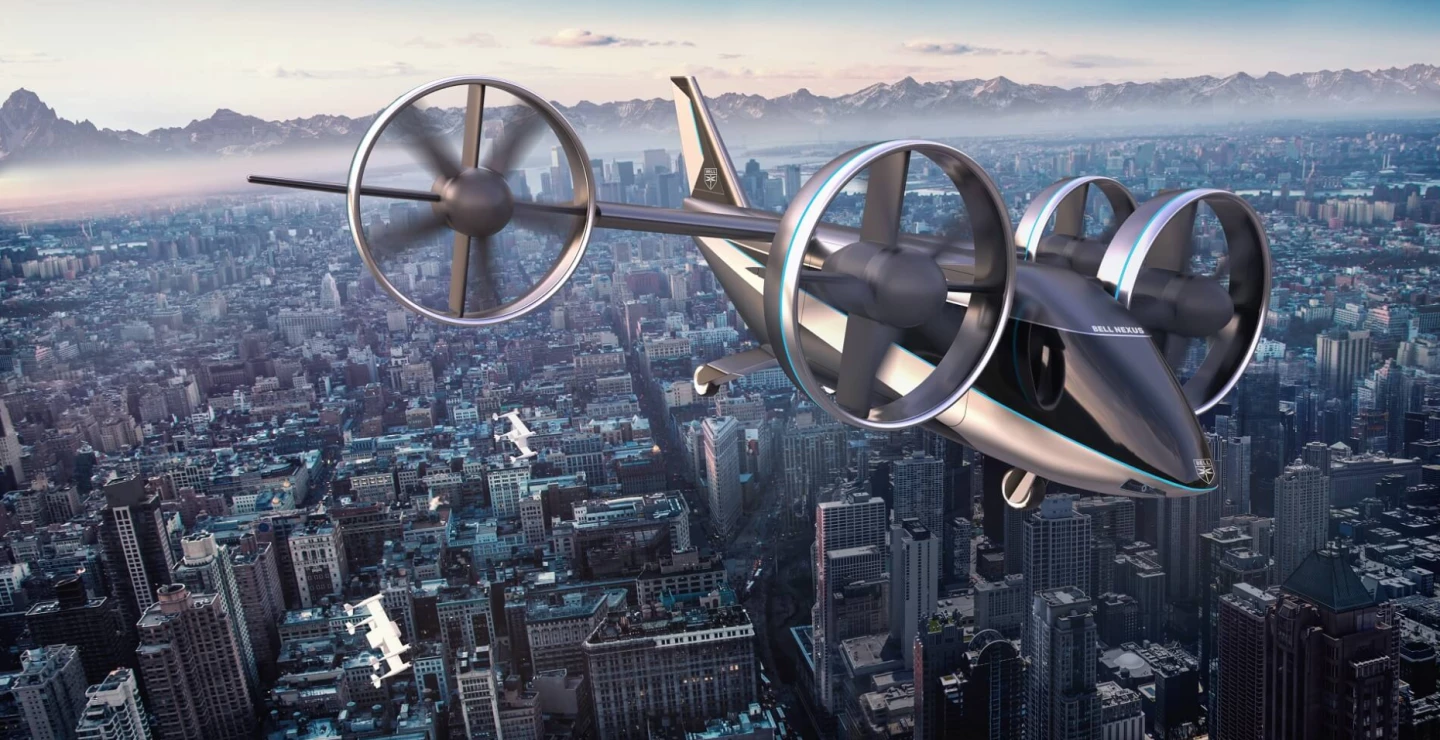
Bell, headquartered in Texas, is a major aircraft manufacturer with a famous history in rocket planes and fighter jets as well as nearly 80 years in the helicopter business. Since 1960, it's been a subsidiary of Textron, which also holds Beechcraft, Hawker and Cessna and posts annual revenues over US$13 billion. As well as producing some of the best known military and civilian helicopters on the market, it was also a partner on the V22 Osprey, among numerous other tilt-rotor projects. You better believe Bell is taking a swing at an air taxi.
The Nexus 4EX is the latest design we've seen, a large and snazzy-looking machine using a large wing and four big, shrouded, tilting rotors. Its range is not battery-only; at the moment, it also rocks a gas turbine-powered generator. The company has stated it feels multiple powertrain options including hybrids will make it a more attractive product for commercial customers.
Designs like this, the Karem Butterfly and the CityAirbus are a little worrying, as they offer no redundancy in case of motor failure. We'll see if that changes as things begin to heat up.
EmbraerX
Transitioning multicopter with 8 vtol rotors and 2 forward props, five seats, unknown top speed, unknown range

Brazil's Embraer is a large manufacturer, primarily of commercial, military and business jets, pulling in US$3-4 billion a year. So while it's no Boeing, this is a well-established company with a 51-year heritage and plenty on the go. EmbraerX, headquartered in Florida, was founded specifically to break into the disruptive eVTOL space, and it's one of the vehicle partners at Uber Elevate.
The EmbraerX concept uses thin overhead wings and a pair of big rear props for forward flight. Eight smaller VTOL rotors are distributed along the wings, removing the need for any tilting rotors. The VTOL rotors appear designed for low drag operation, but they won't get out of the way as well as some other designs once airspeed picks up. These guys are paying special attention to accessibility, and the aircraft looks pretty cool with its LED highlights.
It's got a pretty wide footprint, and that could well prove to be a necessary evil for high-efficiency operations. The concept appears to be in a fairly early stage of development, and as such no speed or range has been nominated yet.
Hyundai
Transitioning multicopter with 8 coaxial VTOL rotors, four large tilt rotors, five seats, 180 mph top speed, 60 mile range

Korea's Hyundai Motor Group is one of the world's largest car manufacturers, an industrial colossus pulling in over US$220 billion a year. In September 2019, it announced it was launching a new Urban Air Mobility division with a 30-year NASA veteran at the helm, and by January 2020 the company was ready to show off a full-size model of its S-A1 air taxi.
It's an interesting design, with four dedicated spots along a large front wing that each support a pair of medium-sized, contra-rotating coaxial VTOL props. These are supplemented by four large tilting rotors at the front outside edges and on and on the V-shaped rear wing. It has the tools for excellent stability in a hover and high-speed forward flight, although efficiency will suffer thanks to those exposed, non-tilting VTOL props.
A very wide footprint may make this thing a little ungainly at skyports, and any aircraft with tilting rotors adds a significant degree of complexity to the flight control system. Still, Hyundai must be viewed as a major player at this table, and while it's made no mention of hydrogen energy systems yet, Hyundai is one of the two biggest exponents of fuel cell vehicles (alongside Toyota), and it doesn't take much to join the dots here.
An energy-dense hydrogen powertrain could be a significant ace up the company's sleeve, offering enormous range and very quick refueling, developments which could confer a huge advantage when the rubber starts hitting the road. Mind you, that wouldn't be an advantage over Joby Aviation, since Joby's hookup with Toyota plugs it into the other hydrogen giant in the auto world.
Karem Aircraft
Transitioning eVTOL with four large tilting rotors, five seats, 200 mph top speed, 100 mile range
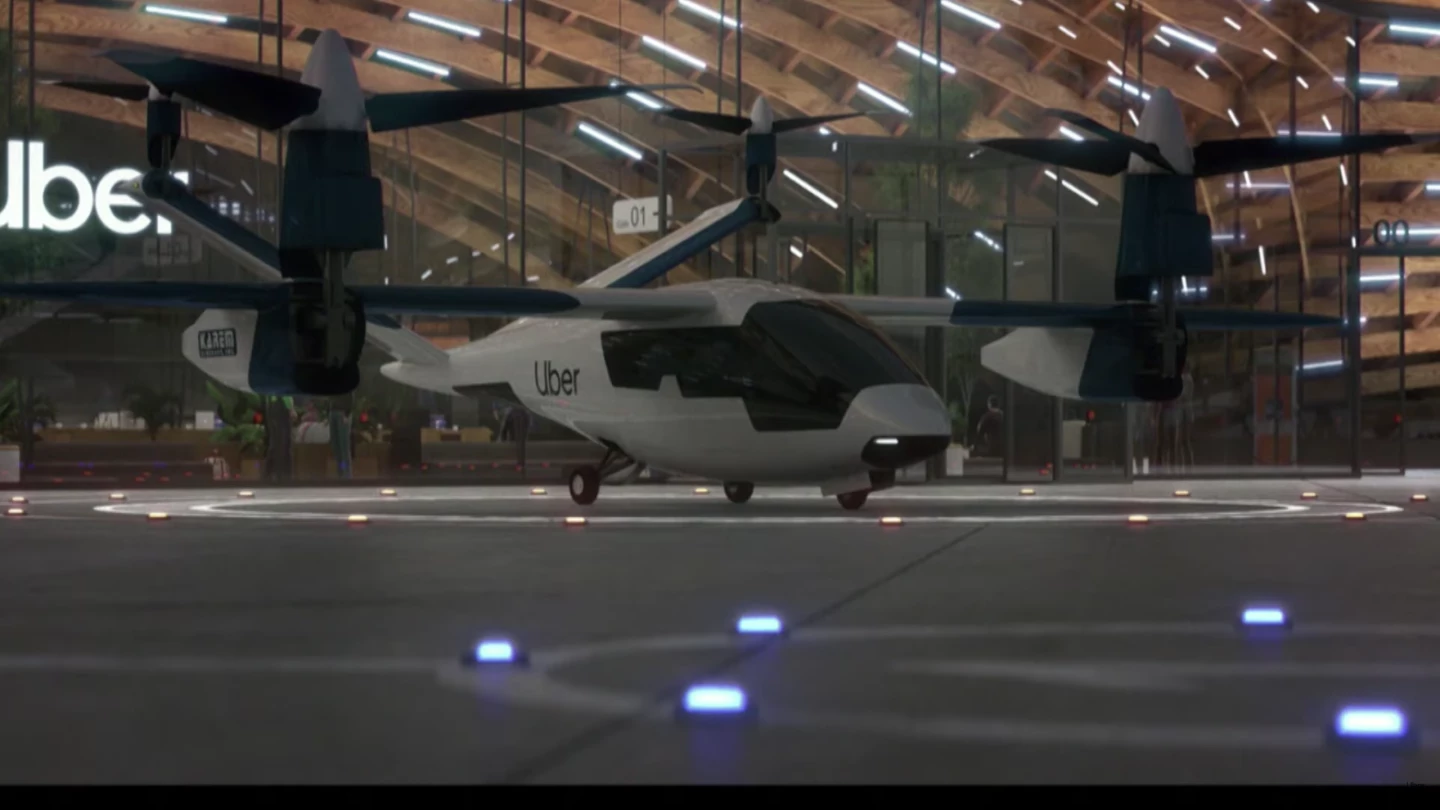
Abraham Karem was the chief designer for the Israeli Air Force back in the 1970s, and a military drone pioneer. His Amber drone eventually evolved into the famous Predator drone that rose to prominence in the 1990s, and since moving to the USA and setting up his own shop, his company has developed and built a number of defense-targeted aircraft, including tilt-rotor heavy lift aircraft and military Future Attack Reconnaissance Aircraft helicopter designs.
Karem's eVTOL air taxi design seems deliberately named to distance it from the company's military experience, but the design link to heavy lift aircraft is hard to miss. The Butterfly design uses only four large, tilting props, one each side of the large main wing and two sitting on the tips of the aircraft's V-shaped tail. It's fast, efficient and ... pretty huge from the looks of things.
Karem raised US$25 million toward the Butterfly program last year, chiefly from Korea's Hanwha Systems, and is spinning off a new company solely for this air taxi business.
Pipistrel Vertical Solutions
8-rotor transitioning multicopter with a single tail prop, five seats, 175 mph top speed, 69 mile range

Slovenia's Pipistrel is an established aircraft manufacturer with some 30 years in the market, as well as 13 years' worth of experience with electric aircraft and plenty of experience with pilotless systems. It has signaled an intention to break into the eVTOL market and partnered with Uber Elevate as one of its initial eight vehicle partners.
The Pipistrel 801 has a high and large wing, a powerful tail propeller, and two banks of four VTOL rotors running front to back either side of the cabin. The company promises a fast and "sporty" ride, made more efficient thanks to little covers that pop out to block off the VTOL fans once you're in forward flight. Honeywell is involved building the flight control systems – no small task on a transitioning multi-mode aircraft like this – and Pipistrel claims the 801 will be impressively quiet for a five-seater.
It's unclear how much cash the company has to throw at this, though, and while it's established a track record building innovative high-tech aircraft, and has its own manufacturing capabilities, the eVTOL air taxi sector seems to demand monstrous investment. The Uber hookup could bring in sales eventually, but Uber is in no position to offer any development capital.
This list is far from exhaustive. If you feel we've left a significant player off the list, please let us know in the comments below!




